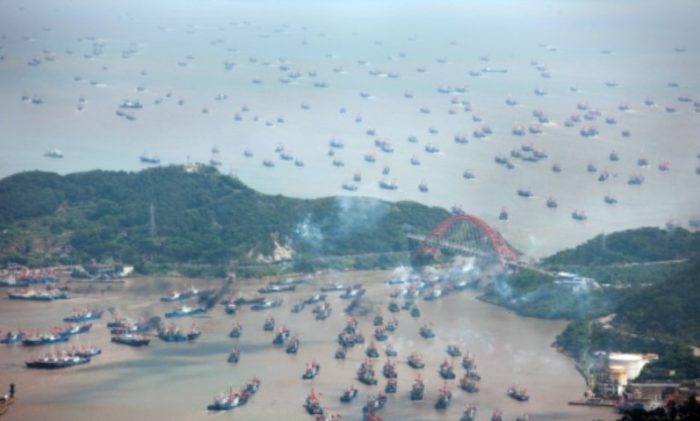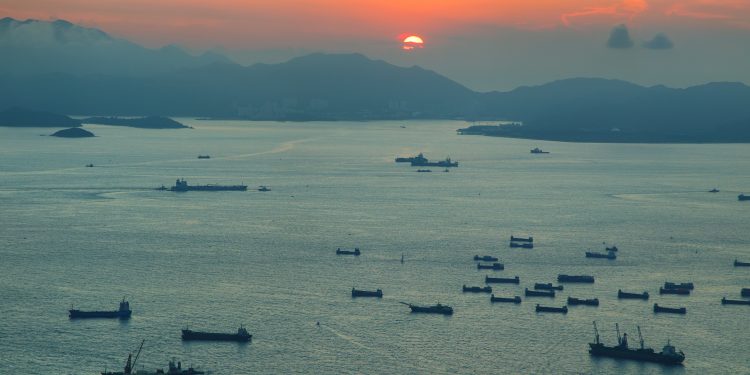The Gard Club makes recommendations on how to navigate safely in the Chinese waters during the seasonal fishing ban which came into force on 1 May 2022.
Similar to the increase in fishing traffic seen in the period before the start of the ban, the number of fishing boats is expected to increase significantly once the ban comes to an end. As some illegal fishing activities may still continue in some areas during the ban, ship operators and masters are advised to take additional precautions when planning a voyage to and from Chinese ports during this period.
[smlsubform prepend=”GET THE SAFETY4SEA IN YOUR INBOX!” showname=false emailtxt=”” emailholder=”Enter your email address” showsubmit=true submittxt=”Submit” jsthanks=false thankyou=”Thank you for subscribing to our mailing list”]
The Ministry of Agriculture and Rural Affairs of China regularly issues circulars to clarify the period of the fishing ban for the four sea areas along the coastal waters of China; the Bohai Sea, the Yellow Sea, the East China Sea and the South China Sea. The fishing ban lasts from three and a half months to four and a half months depending on the sea area. It is worth noting that in addition to stipulating the applicable area and time, the notice also sets out the types of fishing operations covered by the ban.
Previous experience suggests that the number of fishing vessels in Chinese waters increases significantly in the period leading up to the start of the fishing ban and immediately after the ban ends in each sea area. Moreover, illegal fishing activities may continue in some areas during the fishing ban season, especially in the first part of the period.
In 2021, China MSA issued safety guidelines for the prevention of collisions between merchant vessels and fishing vessels in Chinese Coastal Waters. The guidelines also recommend that every crew member engaged in navigational watchkeeping duty in these areas should be familiar with their contents. The guidelines provide practical guidance on navigation method, collision avoidance and emergency rescue. In particular, specific recommendations are given to merchant vessels before entering areas with high concentration of fishing vessels and when navigating through such areas.

In light of these, the Gard Club makes the following recommendations:
- Voyage planning: Consider the designated fishing zones during voyage planning and, where possible, mark them on navigation charts and ECDIS.
- Bridge team composition: Increase the bridge watch keeping level in advance to ensure that the OOW has sufficient assistance at night as well as during the day. Plan other onboard activities for relevant crew members accordingly to ensure that members of the bridge team are well rested for navigation related duties.
- Safe speed: When operating in areas with high fishing activity, proceed at a safe speed with engines ready for maneuvering. The Officer of the Watch (OOW) should be empowered to adjust the speed as necessary.
- Use of RADAR/ARPA: Make full use of radar and sound fog signal when navigating in fog, even when no fishing boats are sighted on the radar. The use of radar can be vital when navigating in these waters. General practice of long range scanning (12-48 nm) using the S-band radar to identify clusters of fishing fleet and the X-band on small range (3-6 nm) for collision avoidance can be effective.
- Keeping clear of clusters: Where the OOW is able to detect a cluster of fishing boats, try to alter course well in advance to avoid navigating through it.
- Detection and avoidance of fishing boats/nets/marks: AIS is widely used not only on fishing boats, but also on fishing nets/marks in Chinese waters. To evade supervision, fishing boats may have their AIS switched off or manipulated when engaged in fishing activities during the period with the fishing ban. Mariners must be aware of the inherent limitations of and the risk of over-reliance on AIS in bridge watchkeeping and collision avoidance.
- Communicating with fishing boats: As it might prove difficult to establish contact with fishing boats via VHF, use of whistle and day lamp may be a good way to attract their attention when required.
If a collision occurs, or is suspected to have occurred, the master and crew must render all possible assistance to the fishing vessel and contact the nearest VTS/MRCC via VHF or by calling the emergency telephone number (12395). We also stress the importance of maintaining a record of all evidence, including VDR data
…says Gard Club on its website.





























































